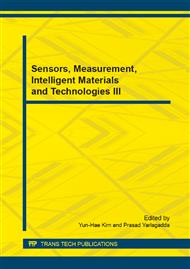p.694
p.699
p.707
p.711
p.715
p.720
p.726
p.730
p.734
Void Fraction Detection in a Gas-Liquid Two-Phase Flow Using a Propagation Attenuation Method
Abstract:
Based on the principle of the attenuation of an acoustic wave propagating in a gas-liquid two-phase flow, an experiment has been designed to measure the void fraction. The experiment system is consisted of three segments which arepressure stabilizing control system, ultrasonic measurement system and bubble injection system. The measurement process is three steps. First, a reference experiment is performed to acquire the received signal amplitude in pure liquid. Then, measurement of the received signal amplitude in different void fraction is accomplished. Last, the relationship between void fraction and signal amplitude attenuation is given on which the void fraction of two-phase flow can be detected. It is confirmed that void fraction detection using the present method achieves successfully.
Info:
Periodical:
Pages:
715-719
Citation:
Online since:
March 2015
Authors:
Price:
Сopyright:
© 2015 Trans Tech Publications Ltd. All Rights Reserved
Share:
Citation:


